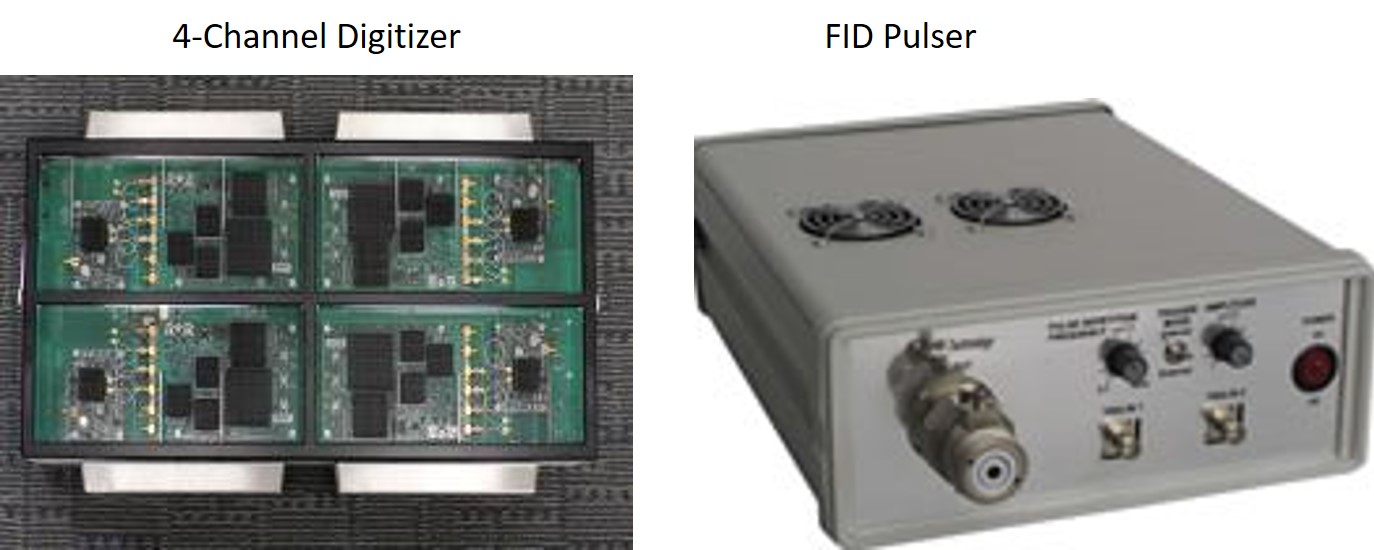ImpSAR
Impulse Synthetic Aperture Radar
What is ImpSAR?
Eureka Aerospace has developed and successfully demonstrated ImpSAR operations in both the strip-map and spot modes. To achieve a 3D/Stereometric ImpSAR capability, Eureka Aerospace utilized an additional antenna along the vertical direction.
It also needs to be emphasized that, for an impulse waveform, the dispersion effects due to conductivity of the medium, such as soil, have little impact on the quality of the signal, as long as pulsewidth, τ satisfies the following condition:

Figure 1. Instrumented ImpSAR van used for field exercies.

ImpSAR is compact, lightweight and consists of very few consituent elements: an Impulse radiating antenna (e.g. IRA or CEM), a fast rise-time pulser, a digitizer and ImpSAR processing code(s). Therefore, ImpSAR can be easily integrated into any ground-based or airborne (e.g. UAV) platform.
ImpSAR Antennas
Impulse Radiating Antennas (IRAs) – IRAs are extremely broadband antennas consist of a parabolic reflector fed by a pair of transmission lines driven by a 100 ps rise time pulser. For these types of IRAs, the lower cutoff bandwidth occurs at fmin ~ c/2D, where c=3×108 is the speed of light, and D is the IRA dimension. For example, using a 23 cm IRA, we get fmin ~ 640 MHz. The IRA’s upper cutoff bandwidth, however, is inversely proportional to the rise time of the pulser and thus inversely proportional to the width of the impulse t, i.e. fmax ~ 0.35/t. Thus, using a 100 ps rise time pulse, we get fmax ~ 3.5 GHz, which yields the total signal bandwidth of approximately 3 GHz and thus reaching sub-inch resolution. It can be shown that IRA’s 3dB beamwidth is q3 ~ 2ct/D. For example, for 100 ps wide pulses and a 23 cm IRA, we have q3 = 0.26 rad corresponding to a 15 degree beam.
Circular Electric Monopulse (CEM) – CEM is a new planar, compact, broadband antenna that was designed by Eureka specifically for unmanned aerial system (UAS) applications, where it can be arrayed and conformed to the fuselage of an airborne platform. Each CEM is a flat, square-shaped and only 1.5 mm thick module. We designed and fabricated CEMs of two different sizes: 25×25 cm and 8.3×8.3 cm, best suited for the applications in the 300MHz - 3GHz and 800MHz - 9GHz range, respectively.
ImpSAR Applications
News & Recognition
Through-Wall Imaging Exercise at Empire Challenge 10
Eureka's through-wall radar imaging team participated in Empire Challenge 10, an annual joint and coalition intelligence, surveillance and reconnaissance (ISR) interoperability demonstration sponsored by the Undersecretary of Defense for Intelligence and organized by USJFCOM. This year's exercise took place in Ft. Huachuca, AZ. The ImpSAR...
Through-the-Wall Radar Imaging — Book Chapter
A chapter by Eureka's Dr. James Tatoian, "Impulse SAR and Its Application for Through-the-Wall Detection and Identification of People and Weapons," is featured in a new book, Through-the-Wall Radar Imaging (CRC Press, ed. Moeness G. Amin). Details and ordering information are available via CRC Press and Amazon .
Advances in Environmental Remote Sensing — Book Chapter
A chapter by Eureka's Dr. Giorgio Franceschetti and Dr. James Tatoian, "The Impulse Synthetic Aperture Radar," is in a new book, Advances in Environmental Remote Sensing: Sensors, Algorithms, and Applications (CRC Press, ed. Qihao Weng). Details and ordering information are available via CRC Press and Amazon .



